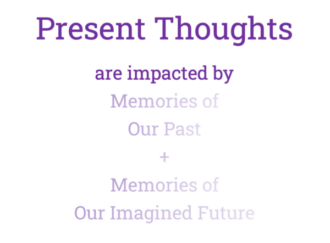Follow These 7 Steps to Increase Your Job Win Rate
Win the future by understanding your potential customers’ past, present and imagined future.

Jim Stein
Published Date: March 7, 2024

We are built to imagine future scenarios.
Often without trying, we’ll catch ourselves thinking about an upcoming event or a process that we’ll be going through to attain a goal. We want to make good choices and avoid bad ones, so our brains keep imagining good and bad future scenarios.
The higher the stakes and the more emotion tied to an approaching situation, the more likely we return to imagining how it will play out. By the time it’s upon us, we’ve run scenarios through our minds many times—enough that we actually have memories of our imagined future scenarios, both good and bad.
This means your potential customers have already imagined many good and bad scenarios about their project, like how it will look when it’s done and what their relationship will be with the company that does the work.
Most importantly, they’ve imagined how good and bad outcomes will impact their family and friend relationships. They’re probably not methodically quantifying all the good and bad scenarios that they imagined. Instead, they have a feeling about it—memories of their spouse being upset at the bad decision they made because several times, in different ways, they imagined this occurring. They have good memories of their friends and family members gushing over the completed quality job and the pride they felt in these imagined scenarios.
As a local company owner who loves Quality Customers, you can give your potential customers confidence that by choosing your company, they will avoid their bad imagined scenarios and attain the good outcome of a quality job and increased status among their family and friend groups.
Here’s how to do it.
1. Discover the Past
Have the customer describe two past experiences with local companies, one good and one bad. Ask her how she felt about each experience.
2. Tie Past Experiences to Emotions
Summarize each story and anchor each with the emotions she felt. She will see that you now understand her experiences and how she feels about them.

3. Evoke Memories of Imagined Future Scenarios
Ask her how she imagined this work to proceed and how it would be when it was complete. Then have her describe her fears of a job gone bad.
“I’m sure you’ve imagined how you’ll deal with a company like ours and how this will look when we’re done. Describe what you’ve been thinking about and what you want to see.”
Summarize her imagined good scenario to the wording of the positive emotion she said she would feel. Repeat this process for her memories of an imagined bad future.
“Have you thought about what could go wrong if you get a bad company that starts out OK but becomes unresponsive and ends up doing low-quality work?”
Demonstrate that you understand her concerns by summarizing her answer and tie this summary to the negative emotions she described when she had a bad experience with a company in the past.
4. Win the Past
Prove that your past work is high-quality and your customer satisfaction is excellent. Show “before and after” pictures, certifications and awards. Describe how you feel about your team and its accomplishments.
5. Frame the Present
Describe the current state of the potential work and the issues that require true expertise to get the Good Future outcome she described.

6. Illuminate Two Futures
Now take her into a Good Future scenario with your company. Describe how your company will operate and the quality of the completed work. Anchor this image of the job completed by mentioning the words she used to describe how she feels about the good outcome she described from the past.
Now briefly cover the Bad Future scenario and compare and contrast your company with “typical companies.”
“Some companies may have problems on this job, like ______________. We avoid these problems and get you a good outcome by _______________________.”

7. Summarize the Past, the Present and the Winning Future
“This is what happened to you and how you felt about it.
Here are key aspects of your job requirements and its challenges.
I understand what you want and your concerns.”
Declare that by choosing your company, she will get her good imagined scenario. To do this, describe a good scenario that she told you about that you can deliver on and include how she said it will make her feel when it’s completed.
There it is.
Follow these seven steps to increase your job win rate by demonstrating that you understand your customers’ concerns and aspirations through time, from past to future.
Related Blogs

EGO and Customer Satisfaction: Part 1
Jim Stein
Does your staff ever unconsciously exhibit moral superiority because they believe they’re right about an issue? Hey, they might be right, but enhancing communication requires them to be open to views and thought processes that they believe to be flawed.

Helpful Expertise #2: Responsiveness
Jim Stein
Responsiveness is the perceived time it takes for your team to act on promised and implied commitments. By definition these implied commitments are unspoken and often assumed by custom, like returning a phone call within two days. Since there’s no official rule of response times per channel between company and customer, unless you specifically set a response commitment, each customer judges your responsiveness subjectively based on their individual sense of what the standard should be for the channel of communication and the nature of the commitment.
Latest Blogs

EGO and Customer Satisfaction: Part 3
Jim Stein
Establish up front what your customer expects from you by asking, “What results do you expect to see from our work?” When you understand the customer’s expectations, you can address any misconceptions before the work begins.

EGO and Customer Satisfaction: Part 2
Jim Stein
Figure out how to foster a strong sense of pride in each team member’s quality work, displays of strong work ethic, customer satisfaction focus and professional development. Start by recognizing, thanking, and rewarding each team member on specific accomplishments and moments of success. Expand from there. Once you realize that your job is to foster GOOD EGO, you’ll come up with ideas to do so.


